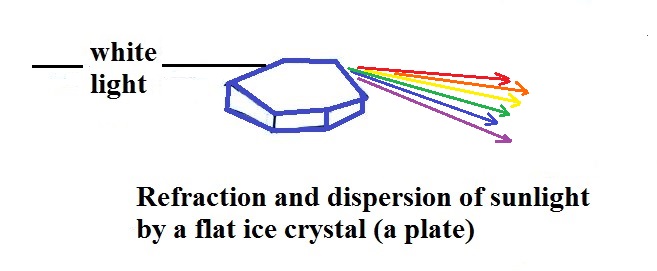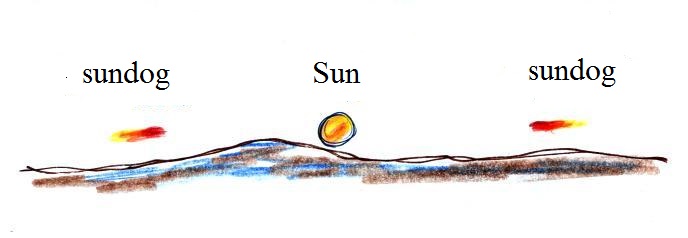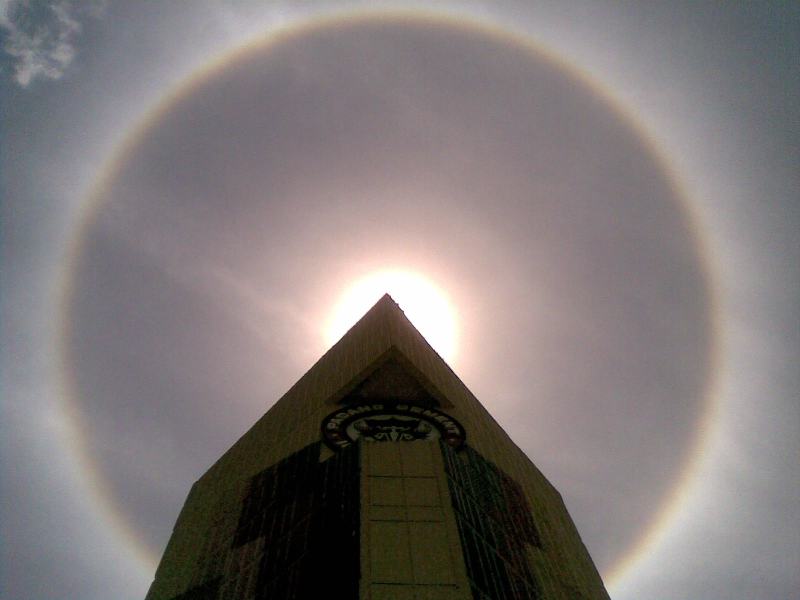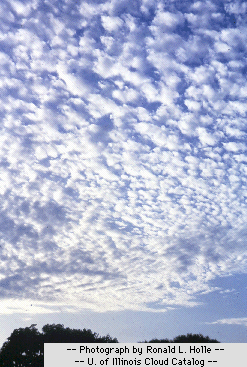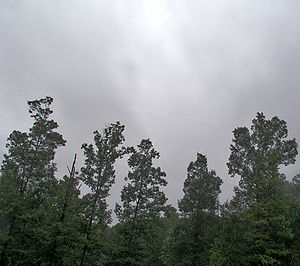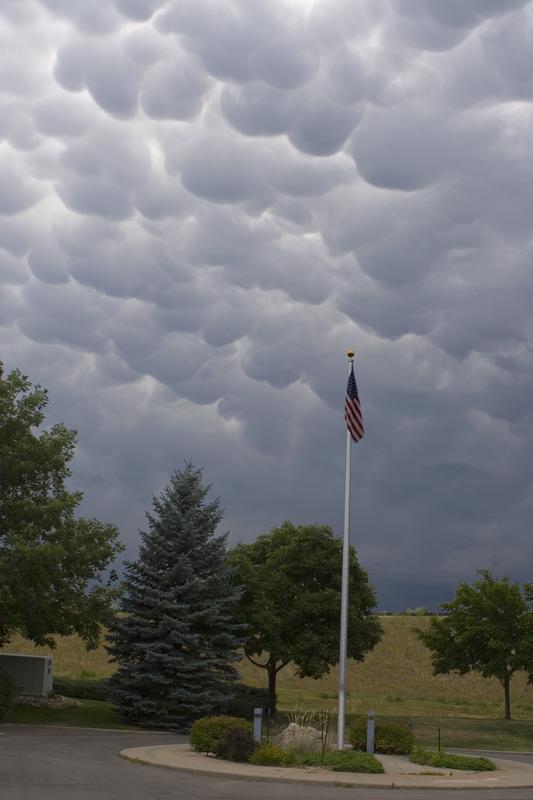Friday, Mar. 22, 2019
George Gershwin "Rhapsody
in Blue" (17:17) Los Angeles Philharmonic
Orchestra (directed by Leonard Bernstein)
We'll
use page 97a, page 97b, page 98a and perhaps page 101a from the
ClassNotes today.
The 1S1P Ultraviolet Light reports were returned today.
A handful of students have reached 45 1S1P pts, the maximum
number of points allowed. They do not need to write any more
1S1P reports. You can check to see if your in this group here.
Sketches, photographs, and written descriptions of the
10 main cloud types
We've already learned about the basic strategy used
to identify and name clouds; next we're going to be looking at
a lot of cloud pictures. It's always a good idea to o
organize new material is a clear compact way. Here's
something that may help.
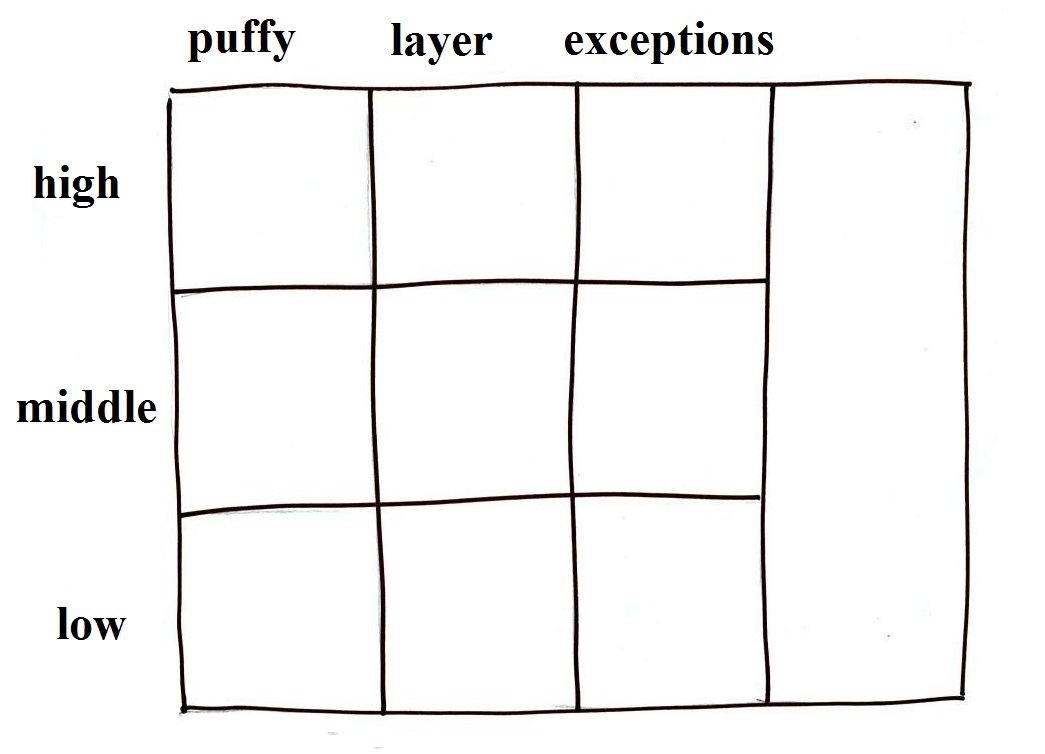
|
|
I would recommend taking out a blank sheet of paper and drawing
a chart like shown above at left. There are 10 boxes, one
for each of the cloud types. The three altitude categories
run along the vertical side of the chart and the two appearance
categories run along the top (note the exceptions column).
This will force you to remember the key words. Then you
should be able to put a name in each box, sketch each of the
clouds (as done above at right), and maybe even include a short
written description of each cloud.
Something that I often forget to mention in class - the
colors used on the clouds at right. Green is indicating
clouds that are warmer than freezing and made up of only water
droplets. Purple or violet indicates very cold high altitude
clouds composed of only ice crystals. The middle level
clouds shaded blue are colder than freezing and contain both
unfrozen water droplets and ice crystals. That's a little
surprising but turns out to be a very important part of
precipitation-producing (and lightning-producing) clouds.
We'll come back to this again next week.
We'll be looking at pictures of most of the 10 main cloud
types today. I'm hoping you'll go outside and have a look at
clouds when and if they're in the sky. But also a warning,
real world examples are often much complex than what we'll be
looking at here. You'll often find many different cloud
types mixed together.
Something else I may forget to mention in class.
If you get a particularly good photograph of a cloud or if you are
an artist and are able to draw some really nice cloud pictures,
I'd like to see them (and include them in the class notes).
So send them in.
High altitude clouds
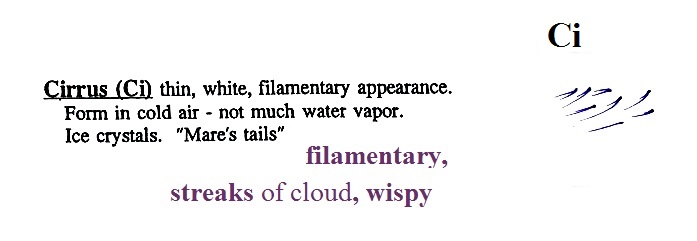
High altitude clouds
are thin because the air at high altitudes is very
cold and cold air can't contain much moisture,
the raw material needed to make clouds (the saturation
mixing ratio for cold air is very small). These clouds are also often blown
around by fast high altitude winds.
Filamentary means "stringy" or "streaky". If you
imagine trying to paint a Ci
cloud you might dip a small pointed brush in white paint
brush it quickly and lightly across a blue colored
canvas. Here are some pretty good photographs of
cirrus clouds (they are all from a Wikipedia
article on Cirrus Clouds)

A
cirrostratus cloud is a thin uniform white layer cloud (not
purple as shown in the figure) covering part or all of the
sky. They're so thin you can sometimes see blue sky
through the cloud layer. Haloes are a pretty sure
indication that a cirrostratus cloud is overhead.
If you were painting Cs clouds you could dip a broad brush
in watered down white paint and then paint back and forth
across the canvas. Cirrostratus
clouds are so thin that you should be able to look
down at your feet and see your shadow.
Haloes and sundogs

Haloes are produced when white light (sunlight or moonlight)
enters a 6 sided ice crystal. The light is bent
(refraction). The amount of bending depends on the
color (wavelength) of the light. The white light is
split into colors (dispersion) just as when light passes
through a glass prism. Crystals like
this (called columns) tend to be randomly oriented in the
air. That is why a halo forms a complete ring around
the sun or moon. You don't usually see all the colors,
usually just a hint of red or orange on the inner edge of
the halo.
This is a flatter ice crystal and is called a plate.
These crystals tend to all be horizontally oriented and
produce sundogs which are only a couple of small sections of
a complete halo. A sketch of a sundog is shown below.
Sundogs are pretty common. Keep an eye out for
them whenever you see high thin clouds in the sky at sunrise or
sunset. The photograph above (source)
is like what you might see in Tucson (except perhaps for the
lake in the foreground). The sun is in the center of the
photograph and the sundog is send at right. The photograph
also illustrates how thin
cirriform clouds will often appear thicker at sunrise or
sunset because the rays of sunlight shine through them
at an angle.
A very bright halo is shown at upper
left with the sun partially blocked by a building
(the cloud is very thin and most of the sunlight is
able to shine straight through). A halo like
this might cause a crowd to gather. Note the
sky inside the halo is darker than the sky outside
the halo. The halo at upper right is more
typical of what you might see in Tucson. Very
bright sundogs (also known as parhelia) are shown in
the photograph at bottom left. The sun in the
photograph at right is behind the person. You
can see both a halo and a sundog (to the left of the
sun) in this photograph. Sources
of these photographs: upper
left, upper
right, bottom
row.
If you spend enough time
outdoors looking up at the sky you will eventually see
all 10 cloud types.
Cirrus and cirrostratus clouds are fairly
common. Cirrocumulus clouds are a little more
unusual.
The same is true with animals,
some are more commonly seen in the
desert around Tucson (and even in town) than others. If you click on the link you'll
see pictures of some of the wild animals that live in and
around Tucson. With the exception of a skunk I've seen
all of them in my neighborhood in central Tucson (often in my
backyard).

To
paint a Cc cloud you could dip a sponge in white paint
and press it gently against the canvas (as I tried to do
earlier). You would leave a patchy, splotchy
appearing cloud (sometimes you might see small
ripples). It is the patchy (or wavy) appearance
that makes it a cumuliform cloud.
The table below compares
cirrostratus (the cloud on the left without texture)
with a good example of a cirrocumulus cloud (the
"splotchy" appearing cloud on the right). Both
photographs are from the Wikipedia article mentioned
earlier.
Cirrostratus - Cirrocumulus comparison
Middle altitude clouds
Altocumulus clouds are pretty
common. Note since it is hard to accurately judge
altitude, you must rely on cloud element size (thumbnail size
in the case of Ac) to determine whether a cloud belongs in the
high or middle altitude category. The cloud
elements in Ac clouds appear larger than in Cc because the cloud
is closer to the ground. A couple of photographs are shown
below (source: Ron Holle for WW2010 Department of
Atmospheric Sciences, the University of Illinois at
Urbana-Champaign)
There's a much larger collection in this gallery
of images. The fact that there are so many examples
is an indication of how common this particular type of cloud is.
Altostratus clouds are
thick enough that you probably
won't see a shadow if you look down at your
feet. The sun may or may not
be visible through the cloud.
Three examples are shown below (the first is from a
Wikipedia article, the
middle and right photograph are from an Environment
Canada web page)
When (if) an
altostratus cloud begins to produce precipitation,
its name is changed to nimbostratus.
Without being there,
it is hard to tell whether this is an altrostratus, a
nimbostratus, or a stratus cloud.
The smaller darker cloud fragments that are below
the main layer cloud are "scud" (stratus fractus)
clouds (source
of this image).
Low
altitude clouds
Pretty
common. This cloud name
is a little unusual because the
two key words for cloud appearance have been combined,
but that's a good description of this cloud type - a "lumpy
layer cloud". Remember there isn't a key word for low
altitude clouds.
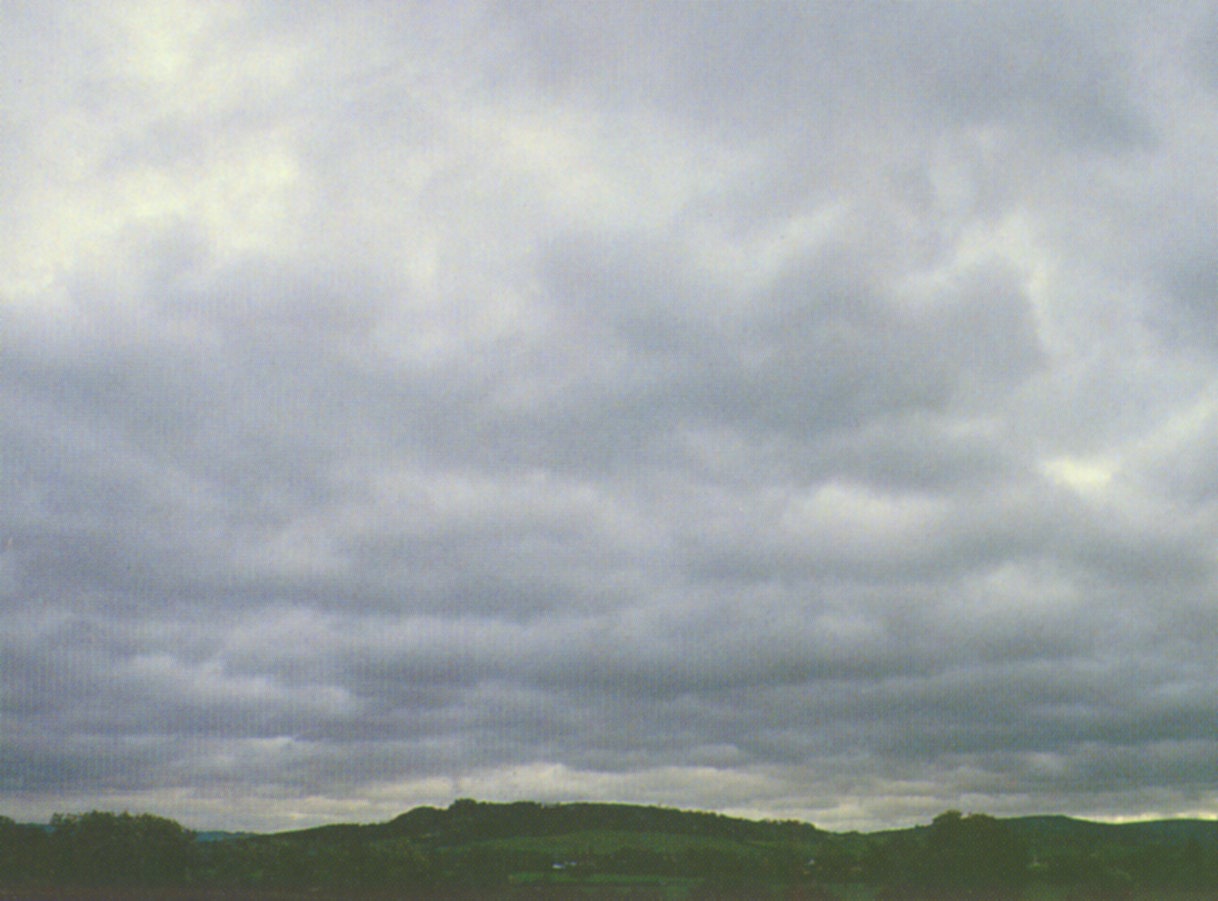
|

|
Because they are closer to
the ground, the separate patches of Sc are
bigger, about
fist size (sources of these
images:left
photo, right
photo ).
The patches of Ac, remember, were about thumb
nail size.. If the cloud fragments in the
photo at right are clearly separate from each
other (and you would need to be underneath the
clouds so that you could look to make this
determination) these clouds would probably be
"fair weather" cumulus. If the patches of
cloud are touching each other (clearly the case
in the left photo) then stratocumulus would be
the correct designation.

No photographs
of stratus clouds, sorry. Other than being closer
to the ground they really aren't much different from
altostratus or nimbostratus.

Cumulus
clouds come with different degrees of vertical
development. The fair weather cumulus clouds don't grow
much vertically at all. A cumulus congestus
cloud is an intermediate stage between fair weather cumulus
and a thunderstorm.
Photographs
of "fair weather"
cumulus on the left (source)
and cumulus congestus
or towering cumulus on the right
(source)
Thunderstorms
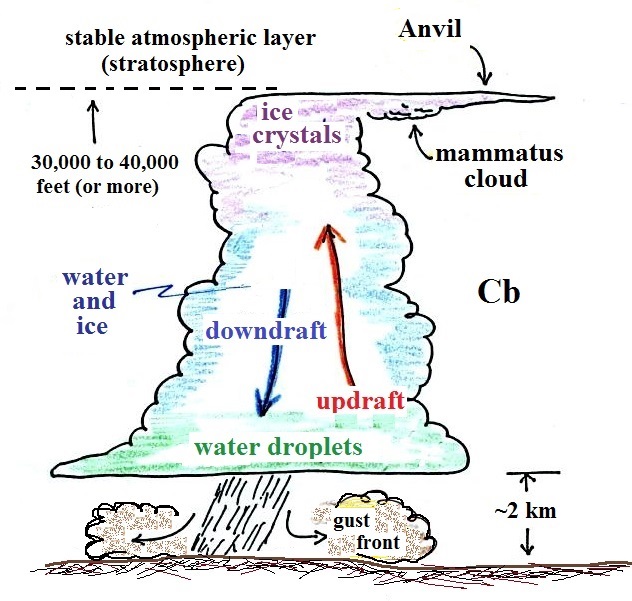
There
are lots of distinctive features on cumulonimbus clouds
including the flat
anvil top and the lumpy mammatus
clouds sometimes found
on the underside of the anvil.
Cold
dense downdraft winds hit the ground below a
thunderstorm and spread out horizontally underneath the
cloud. The leading edge of these winds produces a
gust front
(in Arizona dust front might be a little more
descriptive and easier to remember). Winds at the
ground below a thunderstorm can exceed 100 MPH, stronger
than many tornadoes.
The top of a thunderstorm
(violet in the sketch) is cold enough that it will be
composed of just ice crystals. The bottom (green) is
composed of water droplets. In the middle of the
cloud (blue) both water droplets and ice crystals exist
together at temperatures below freezing (the water
droplets have a hard time freezing). Water and ice
can also be found together in nimbostratus clouds.
We will see that this mixed phase region of the cloud is
important for precipitation formation. It is also
where the electricity that produces lightning is
generated.
The top left
photo shows a thunderstorm viewed from the space station
(source: NASA
Earth Observatory). The flat anvil top is the
dominant feature. The remaining three photographs are
from the UCAR
Digital Image Library. The bottom left photograph
shows heavy by localized rain falling from a
thunderstorm. At bottom right is a photograph of
mammatus clouds found on the underside of the flat anvil
cloud.
Cold air spilling out of the base of a thunderstorm is just
beginning to move outward from the bottom center of
the storm in the picture at
left. In the picture at right the cold air has moved
further outward and has begun to get in the way of the
updraft. The updraft is forced to rise earlier and a
little ways away from the center of the thunderstorm.
Note how this rising air has formed an extra lip of
cloud. This is called a shelf cloud.
Here's a photograph of the dust stirred
up by the thunderstorm downdraft winds (blowing into
Ahwatukee, Pheonix on Aug. 22, 2003). The thunderstorm
would be off the left somewhere and the dust front would be
moving toward the right. Dust storms like this are often
called "haboobs" (source of
this image).
We'll learn more about the
hazards associated with strong downdraft winds later in the
semester when we cover thunderstorms.
Shelf
clouds can sometimes be quite
impressive (the picture above is from a Wikipedia
article on arcus clouds).
The main part
of the thunderstorm would be to the left. Cold air is
moving from left to right in this picture. The shelf cloud
forms along the advancing edge of the gust front (in many ways
it is like a cold front)
You
should end up with something like this at the end of
class. Your cloud chart will also include some words
of description or clues that help you identify and name a
cloud. I've used abbreviations for the cloud names (Cc
= cirrocumulus, As = altostratus etc).
Here's a link to a cloud
chart on a National Weather Service webpage with
actual photographs. 27
clouds are shown. This is because most of the 10 main cloud
types have subtle variations and sub groups.
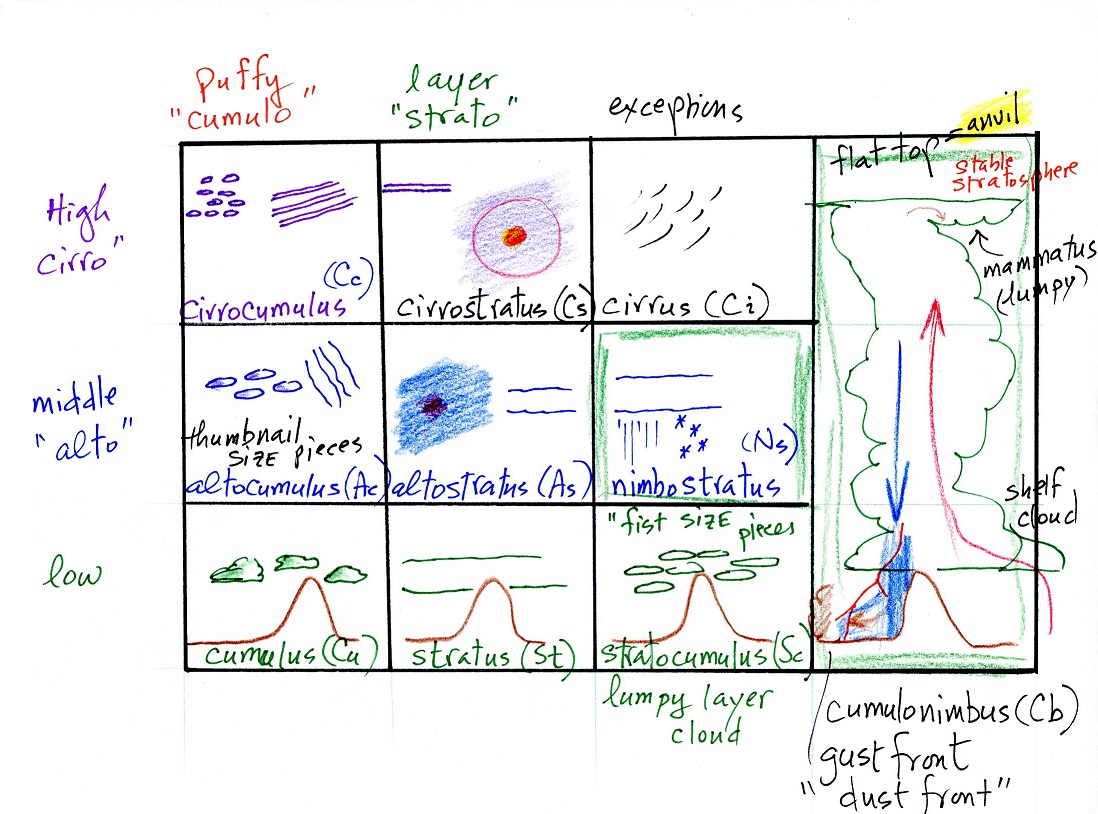
Here's the cloud chart that we created in class today.
Ideally you should be able to start with a blank sheet of
paper and produce something like this.
Formation of precipitation in clouds
Only two of the 10 main cloud types (nimbostratus and
cumulonimbus) are able to produce significant amounts of
precipitation and produce precipitation that can survive the fall
from cloud to ground without evaporating. Why is that?
Before we get into the details you will notice that significant
amounts is underlined in the sentence above. That is because
you will sometimes see streamers of precipitation falling from
some of the other cloud types, clouds that you would not have
thought capable of producing precipitation. A couple
of examples are shown below
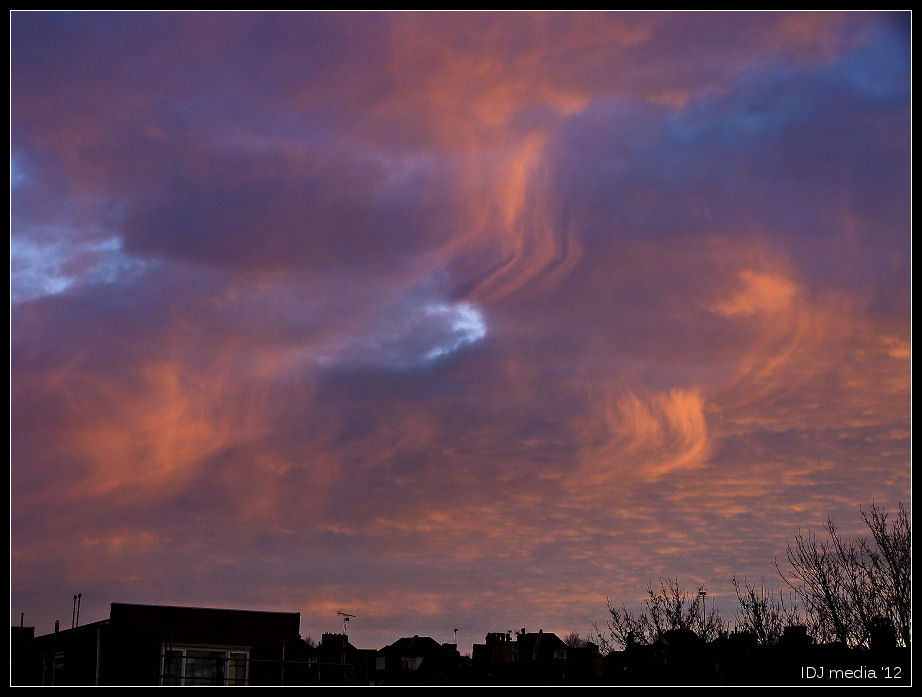
|

|
Streamers of snow falling from either
mid or high altitude clouds at sunset. (source
of this image)
|
Snow falling from high altitude cirrus
uncinus clouds, photographed in Catalina, Arizona, I
believe. (source
of this image)
|
|
Precipitation like the examples above will almost always evaporate
(or sublime) before reaching the ground. If the clouds are
closer to the ground a few of the drops of rain or drizzle or
flakes of snow might survive the fall to the ground, but it would
be very light - probably not even enough to dampen the
ground. So largely it is a question of quickly growing a
precipitation particle of sufficient size as to be able to survive
the fall from cloud to ground without evaporating away.
We'll look at how that is done next Monday.










